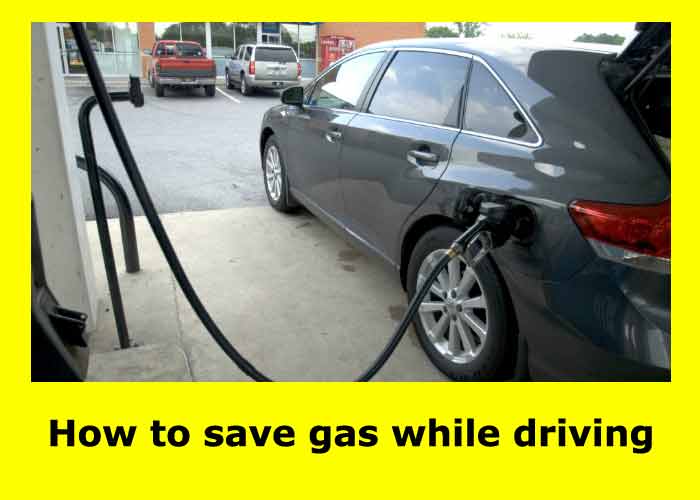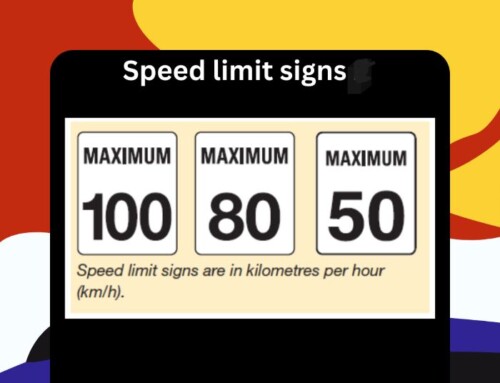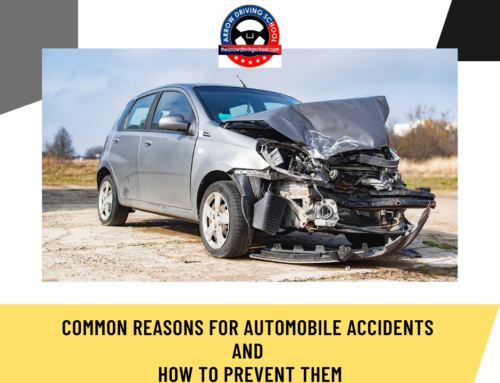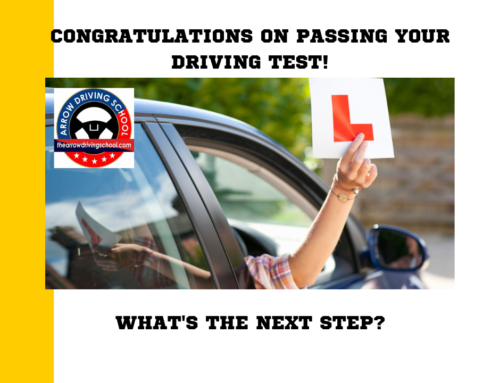Are you looking for tips and tricks to save gas while driving? With the economy still not where it needs to be, we’re all looking for ways to save a few dollars when and where we can. And the idea of getting better gas mileage can appeal to almost anyone. But the question is, what is the best way to do it? How can you drive more efficiently to save gas? That’s where we come in.
Accelerate gently
It’s better to accelerate gradually and smoothly, especially from a stop. A good rule in any driving school is to use a light touch on the gas pedal until you’re going about 25 miles per hour (mph) and then continue to accelerate until you reach the speed limit.
Avoid jackrabbit starts
When you’re stopped at a light or in traffic, take your foot off of the accelerator pedal; this you should have learned when taking practical driving lessons. When the light turns green or traffic starts moving, start driving at a smooth, gentle pace. Don’t hit the gas hard — it won’t get you to your destination any faster, and it will cost you more money at the pump; you can learn this acceleration principle in Arrow Driving School.
Drive with cruise control
If your car has cruise control, use it. Cruise control helps your car maintain an even speed — which is good for fuel economy. But be careful if you drive in hilly areas; if you set the cruise control on a steep hill and allow your speed to drop too much, you’ll burn extra gas when your car tries to regain that speed on the downhill side of the hill.
Combine trips
When possible, combine your trips into one. When running errands, plan your route so that everything is done at once; this eliminates the need to stop and restart your engine while moving from place to place.
Air conditioning
Reduce air conditioning use. Driving with the windows down at lower speeds reduces drag on the car and uses less fuel than using air conditioning at higher speeds, especially if you have a smaller engine. You may also want to reduce the amount of air conditioning used when driving around town.
Dragging brakes
When your brakes are dragging, it causes your car to have to work harder to get the same amount of power because they are not working at their full capacity. The more they work the more fuel they use. This causes your car to use more fuel in order to get the same amount of power. If this is happening, then it’s important that you check them out right away and make sure that they are replaced or repaired as quickly as possible.
Anticipate traffic
Anticipating upcoming stops and starts can be a huge boost to your fuel economy. The less fuel you consume, the smoother the ride is. Instead of plowing through the car ahead of you and then jamming on your brakes at the last second, try to keep a good distance from other cars so that you can coast to a stop without slamming on your brakes.
If you’re in stop-and-go traffic, try turning off your engine for long enough so that it’s not running at a very inefficient level. If you’re stopped for more than 30 seconds, it’s worth shutting off your engine (the EPA estimates this can save you up to 5% in gas costs); otherwise, just let it idle: don’t turn it off and then back on again.
Remove excess weight
Everyone knows that the less weight a vehicle has to move, the less fuel it will consume. By removing just 100 pounds of excess weight from your vehicle, you can improve your fuel efficiency by as much as 2%, according to The Department of Energy.
And if you drive a lot, that adds up. The average car on the road today has somewhere between 500 and 1,000 pounds of junk in it that could easily be removed. This includes things like tools and spare tires, but also unused items like golf clubs or extra clothing.
If you have a large truck or an SUV with a lot of space for stuff, you might have even more than that. To get started with this tip, find out how much weight can be safely removed from your vehicle and then take stock of what’s in there now.
Avoiding speed to save on gas
Maximizing your fuel economy doesn’t mean you have to drive like a grandma. But the faster you go, the more gas your car burns, so keeping it under 80 mph is the best way to save money on gas while driving. The MPG difference between 70 and 80 mph can be significant.
For instance, if you have a Honda Accord, every mile per hour over 60 mph will cost you an estimated 5 cents per gallon in gas. If you have a sporty sedan like an Infiniti Q50 or BMW 335i, high speeds are going to cost you even more in gas.
Those cars get about 15-20% better fuel economy at 60 mph than they do at 80 mph. That’s a lot of money for just speeding. The faster you go, the more often you’ll stop for gas.
Tire pressure
Tires should always be inflated to the recommended air pressure, which you can find printed on a sticker on the driver’s side door jamb or in your owner’s manual. It’s never a good idea to inflate your tires beyond the recommended psi because that can cause the tires to wear out more quickly or can cause an issue with your auto insurance in case of an accident.
Steps of checking your tire pressure
• Check your tires when they are cold.
• Remove the cap from the valve stem on your tire.
• Use a tire gauge to measure the pressure in each of your tires.
• Add air if necessary.
We recommend inflating your tires one or two pounds higher than the recommended number. The reason is that many cars are sold with under-inflated tires to improve traction and handling. A little bit of under-inflation can make a car feel “tighter” and more responsive.
But over time, under-inflation causes tires to wear out faster and adds rolling resistance, both of which can cost you money in the long run. That’s why it’s generally a good idea to inflate your tires just above their recommended psi level.
Plan ahead
Planning ahead is one of the best ways to save money on gas. It’s easy to get into your car and drive around all day without having a clue where you’re going, but you’ll find yourself wasting a lot of gas by doing this. It’s easy to get into stop-and-go traffic when you’re unfamiliar with your route or don’t know where you’re going.
If you know where you’re going before you leave, and plan ahead for traffic, you’ll save time and gas by avoiding unnecessary acceleration and braking.
Planning out your route before you leave helps eliminate all that wasted time and energy in the car, which ends up wasting a lot of fuel when driving around lost or trying to figure out where you need to go next.
Track your fuel consumption
Tracking fuel consumption is a great way to save on gas even if you have no intention of changing your driving habits or if you have a winterize car which can consume a lot. This is because it provides you with information that can help you use less gas without having to change your behavior.
For example, if you learn that you drive 10 miles farther every day than you thought, then you might decide to take a shorter route instead and reduce your gas costs by a few dollars per week.
There are two ways to track fuel consumption. The first method is manual – fill up the tank at regular intervals and log the mileage. Then divide the total miles travelled by the total gallons consumed.
The second method is using an onboard computer or mobile device app to track fuel consumption automatically. This method is more accurate and convenient than manual tracking since it requires little effort and provides feedback in real-time (or nearly in real-time).
Well, there you have it: different ways to help you save more gas while you’re on the road. These are, of course, only a few ideas. But if you’re looking for ways to get more out of every gallon of gas you spend, they just might be a good place to start. If you are a new driver or you just want to improve driving skills, Arrow Driving School has refresher driving lessons, and you can be assured of quality service since they are Edmonton’s Best Driving School that also provides Alberta Registry approved courses, so don’t hesitate to give us a call.






